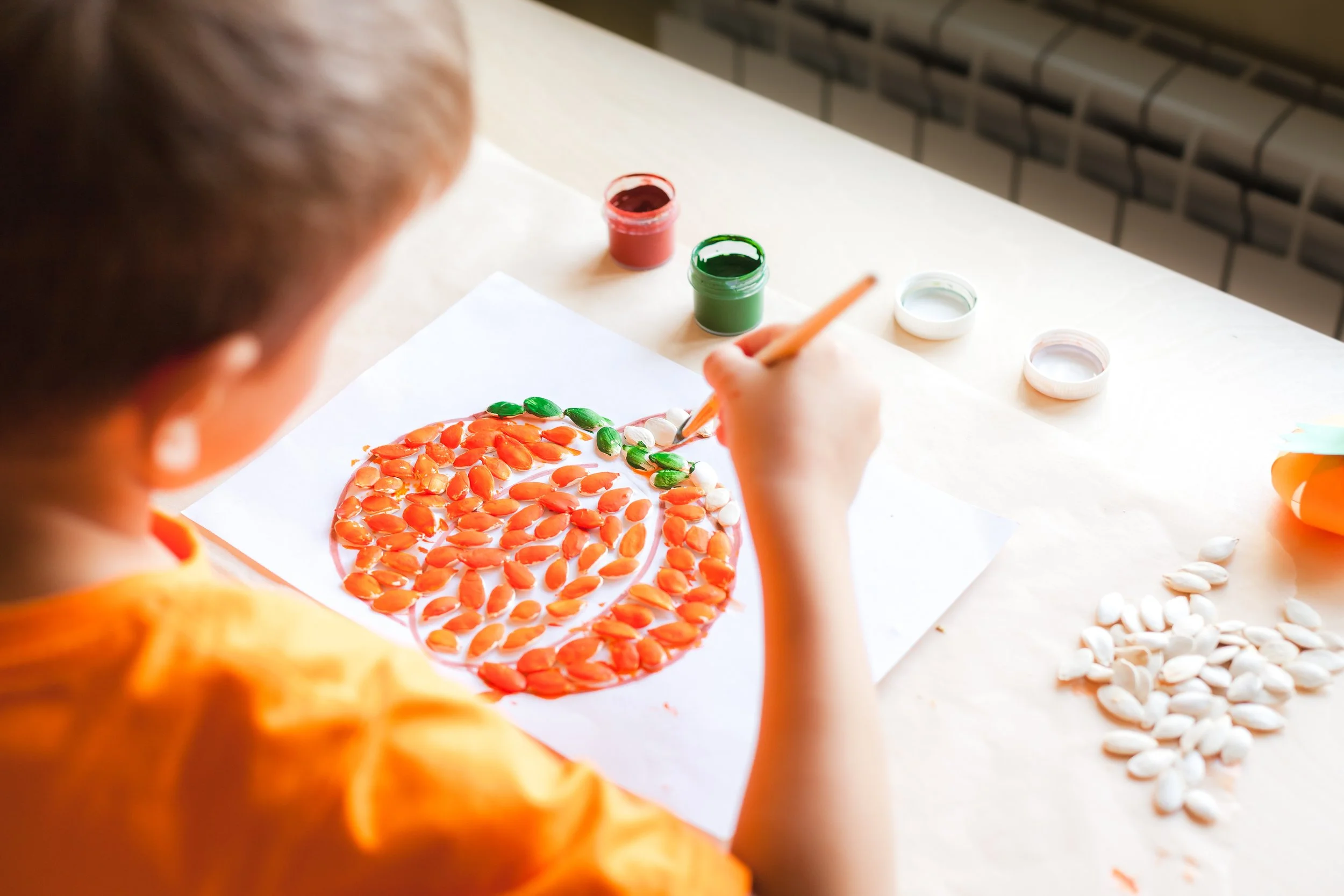Boo! Surprise, Pumpkins Are for More Than Just Halloween
Reading Time: 2 min
Pumpkins have been the symbol of the fall season for centuries. From the time of heirloom pumpkins to modern-day jack-o’-lanterns, pumpkins remain the “fruit of the season.” (Yes, pumpkins are a fruit!)
During pumpkin season, we can incorporate pumpkins into several home and classroom activities related to art, science, language, and math. Pumpkins are timely and symbolic and a fun teaching tool for students of all ages.
Language Arts, Reading, and Writing
Put out one or more pumpkins for children to observe. Ask them to write down a list of words to describe the pumpkin. Then ask them to create a poem or story using the chosen words. Educators and caregivers can take this activity further by asking the children to use their imaginations to describe how they could decorate the pumpkin.
Please encourage them to choose a happy, silly, or spooky theme and create words from it. When finished, the children can exchange assignments to draw pictures of the pumpkins that their friend or classmate describes. This activity incorporates many skills and is fun for all involved!
Creative Writing
Ask students to think about how to use a pumpkin differently than we typically think of them. Pumpkins can be much more than decorations, jack-o’-lanterns, or a delicious pumpkin pie. Offer an example of Cinderella’s coach and challenge students to brainstorm new and unusual uses for pumpkins! This simple but fun writing activity will shine through their creativity and imagination. For extra credit, ask the children to draw a picture of their pumpkin’s new and unusual use.
Pumpkin Math & Science
Pumpkins were made perfectly for math & science! They come in various sizes, shapes, and colors and contain many (many) seeds, which is perfect for math activities that can incorporate weight, circumference, and volume. The science aspect of pumpkins relates to the biology of a pumpkin itself and making predictions on how it will fare in various experiments.
One popular pumpkin activity for students is predicting a pumpkin’s weight. Invite kids to record their estimated pumpkin weight and compare them to the actual weight.
Then, create a chart to organize the information to see who has the most accurate guess.
To take the pumpkin math experiment a step further, ask students to draw a hypothesis on questions such as “Will the pumpkin float?” “Why or Why Not?”
Kids can explore the relationship between the size of the pumpkin, the number of ribs, how many seeds are inside, and how it balances on a flat surface.
Have fun exploring with pumpkins and check out these fun printables below inspired by Lou Adventures’ A Mystery at the Lakehouse. Our very own interactive learning adventure for kids! Download for Free on iPad and iPhone.


















